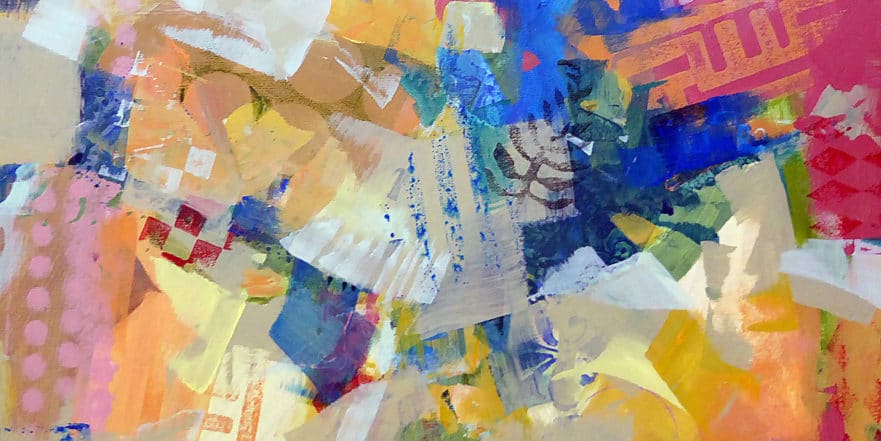It is a universal truth that the first marks on any substrate are most difficult to place. A clean white surface is perfection, so why mess it up? The emptiness of the space is intimidating – there are too many paralyzing options available to the creator.
My university students often had difficulty starting an artwork for this reason.
To help my students, I created a work-around for this dilemma by asking them to bring pre-marked substrates to my art classes. My suggestion was for them to bring in failed artworks, architectural blueprints, posters of events long past from campus bulletin boards, or even humble cardboard or paper bags cut open and flattened.
In explaining the value of such pre-marked surfaces, I described to the students two properties and asked which would provide a more interesting design situation – a perfectly flat acre lot with no trees, or any other surface details OR a heavily slopped acre lot with several trees in the middle that could not be cut down? Everyone agreed that the second lot would force limitations and thus provoke a more creative solution.
I coined the term “environment” to describe these initial sheets that had been charged with the energy of marks unplanned and uncalculated to the work that would follow. Whether they were failed works resurrected from other classes, or pages of text that had nothing to do with the project at hand – it did not matter.
When working on a surface that has been pre-marked, there is nothing to lose. The blank white sheet has been violated. Furthermore those original marks can create an interesting tension that facilitates creative solutions.
As a teaching byproduct I found the more I worked with “environments” in my own practice, the more I saw the benefit of incorporating a period of creative play that was fostered in the process of making them.







